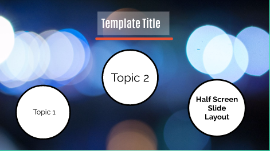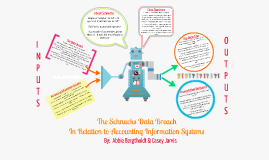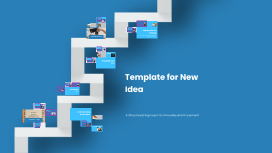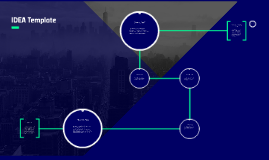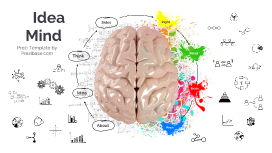Template for New Idea
Transcript: Gathering Feedback Collect feedback through user testing sessions, surveys, and interviews to gain insights into user experience. Use analytical tools to track usage patterns and identify pain points. Implement both qualitative and quantitative feedback methods for a comprehensive view. Encourage users to prioritize features and functionalities based on their needs and preferences. Successful products iteratively refine features based on continuous feedback (e.g., Slack's user-centric updates). Planning for Launch and Marketing Identifying Resources and Budget Iterating on the Concept • Develop a comprehensive launch plan that defines the timeline, activities, and key messages. • Identify target audiences and tailor marketing strategies to reach them effectively. • Utilize digital marketing channels, including social media, email, and SEO to maximize outreach. • Create promotional materials to generate buzz and excitement prior to the launch. • Establish metrics for success, such as engagement rates and conversion tracking, to evaluate impact post-launch. Building a Minimum Viable Product (MVP) • List all required resources including personnel, technology, and materials needed for implementation. • Conduct a budget analysis to estimate costs associated with each resource. • Identify potential funding sources, including grants, investors, or internal allocations. • Monitor expenditures to ensure alignment with the budget throughout the project cycle. • Reassess resource allocation regularly to adapt to changing project needs. Iteration is essential for adapting the product based on feedback and testing results. Analyze the feedback to identify core issues and prioritize necessary changes. Establish a roadmap for implementing changes in short cycles (sprints). A/B testing can be used to make data-driven decisions by comparing different versions of a feature. Brands like Amazon exemplify effective iteration by consistently optimizing their platform based on user data. An MVP is a version of a product with the smallest set of features necessary to validate a concept. Focuses on gathering maximum validated learning about customers with the least effort. Helps in allocating resources efficiently, minimizing waste. Key metrics to track include user engagement and retention rates. Examples of successful MVPs include Dropbox and Zappos, which started with basic functionalities to test market demand. Developing an Action Plan • Set specific, measurable goals and objectives for the implementation phase. • Outline actionable steps to achieve each goal, ensuring clarity and focus. • Assign roles and responsibilities to team members for accountability. • Establish timelines with milestones to track progress and adapt plans as necessary. • Create communication channels for regular updates and feedback throughout the process. Implementation Strategy Effective implementation strategies are crucial for the successful execution of innovative ideas, ensuring that plans are actionable and resources are effectively allocated. Prototyping and Testing Prototyping and testing are critical stages in turning an innovative idea into a successful product. This process allows for early identification of flaws and ensures the product meets user needs before a full-scale launch. Developing a Unique Selling Point A unique selling point (USP) distinguishes your idea in a crowded market. Identify what makes your idea different, whether it's pricing, quality, or innovation. Short, memorable statements can encapsulate your USP effectively. Example: "The fastest delivery service in the industry – guaranteed within 24 hours." Test your USP with potential customers to ensure it resonates. Image Search Keywords Combined Outlining Features and Benefits Developing a valuable image that captures the essence of structuring an idea is crucial to making an impactful presentation. List key features that set your idea apart from competitors. Align features with corresponding benefits to highlight effectiveness. Avoid jargon; focus on clear, understandable language. Use visuals or diagrams to illustrate how features translate to benefits. Example: If a feature is '24/7 support', the benefit is 'peace of mind for users'. Creating a Clear Value Proposition A value proposition articulates the unique value your idea brings to the market. It answers key questions: What problem does it solve? Who benefits? Use specific, quantifiable benefits to demonstrate value. Example: "Our product reduces cost by 30% and increases efficiency by 20%." Keep it concise and clear: 1-2 sentences summarizing the essence of your idea. Structuring Your Idea A well-structured idea revolves around clearly defining its value, outlining essential features, and distinguishing it from competitors. Effective communication of these elements is vital for successful implementation. Shortlisting Viable Concepts Involving Stakeholders • Establish criteria for evaluating ideas, such as







